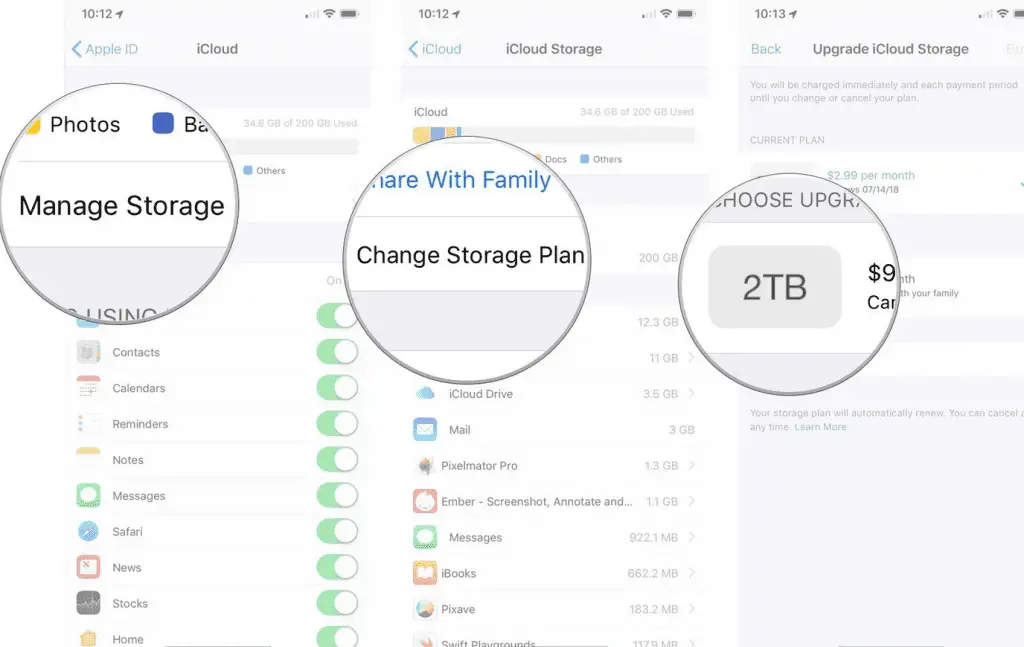Apple Inc. announced iCloud on October 12, 2011, to store data and do computational tasks in the cloud. A projected 850 million people were using the service by the end of 2018, increasing from 782 million in 2016. You may download papers, images, and songs stored on iCloud servers for iOS, macOS, or Windows devices; data can also be shared and sent, and users can manage Apple devices if lost or stolen. iCloud’s features include wirelessly backing up iOS devices via iCloud instead of relying on manual backups to host Windows or Mac computers using iTunes, which iCloud also supports.
In place of Apple’s MobileMe service, iCloud serves as an all-in-one data synchronization hub for iCloud-enabled devices such as iPhones, iPods, and Macs. Service customers can also share photographs, music, and games over Airdrop wireless. iCloud services are supported by eleven data centers owned and maintained by Apple. The data centers are located in the U.S. (six), Denmark (two), and China (three).
Maiden, North Carolina, is the location of one of Apple’s first iCloud data centers. In 2011, iCloud began using Amazon Web Services and Microsoft Azure. (In its 2014 iOS Security white paper, Apple revealed that encrypted iOS files are stored in Amazon S3 and Microsoft Azure.)As of 2016, some aspects of iCloud will be hosted on the Google Cloud Platform, thanks to an agreement between Apple and Google. This post will acknowledge everything regarding how to change iCloud storage to iPhone storage.

How do you change iCloud Storage to iPhone Storage?
- Tap the account name at the top of the Settings page to begin.
- Select “iCloud.”
- Tap “Manage Storage” on the iCloud storage bar.
- Click on “Change Storage Plan.”
- Tap “Downgrade Options” and enter your Apple ID password if required.
- Confirm by pressing “Free.”
Using the iCloud Photo Library directly from the iPhone will allow you to save much-needed hard drive space. The iCloud Photo Library eats up iCloud storage to ensure that your films and photographs are always up to date. It lets you shoot fewer annoyances when you take those beautiful landscape photographs and spontaneous selfies. You must already have adequate iCloud storage space for this to operate. You may only view streamed pictures online, so keep that in mind.
The iCloud Photo Library stores your most recent and frequently accessed photographs. If you have adequate storage space, the iCloud Photo Library will typically fill it with more pictures that you have stored locally. Older pictures may be deleted without your knowledge to free up more space. 5GB of data is included in every new iCloud account created. For individuals who use their iPhones sporadically, this is more than acceptable.
You’ll probably need extra storage space to become an Instagram model with an iPhone. To begin with, the cheapest plan costs just $0.99 per month for 50GB of storage space. You may share more excellent storage options with your loved ones. You won’t be able to use your iCloud email address to send emails, and you won’t be able to save any text messages. You’ll either have to start paying a monthly fee or remove things you don’t need.
In my opinion, $0.99 per month is minimal, and you can get excellent iCloud space for your photos and videos.
Conclusion
iCloud’s architecture and integration into the Apple ecosystem make it easy for consumers to access cloud storage. It seamlessly connects and backs up all of your mobile device’s apps. However, if you’re not an Apple customer, you won’t be able to take full advantage of iCloud. There is no iCloud app for Android users, unlike Windows users, who have a few alternatives. Apple customers will like iCloud’s file syncing and storage features, striking the perfect mix between ease of use and security. On the other hand, others may prefer Google Drive as a superior cloud storage alternative.
iCloud is only one of several Apple apps and services available on Apple devices. Google Drive and Microsoft OneDrive are excellent alternatives if you’re not an Apple customer. These storage companies provide better file sharing, synchronization, and finding. Thanks to its powerful search engine, Google Photos outranks Apple regarding image search and categorization. Microsoft 365 applications and one terabyte of storage are included in the $99.99 annual fee for OneDrive. iCloud doesn’t provide a reduced yearly price option like Google Drive. We hope you have acknowledged everything regarding how to change iCloud storage to iPhone storage.

